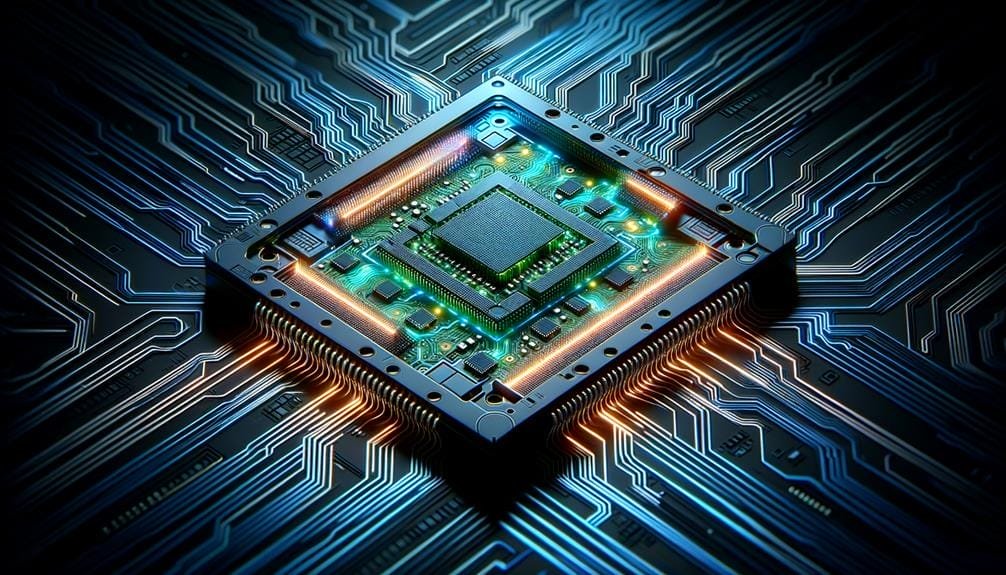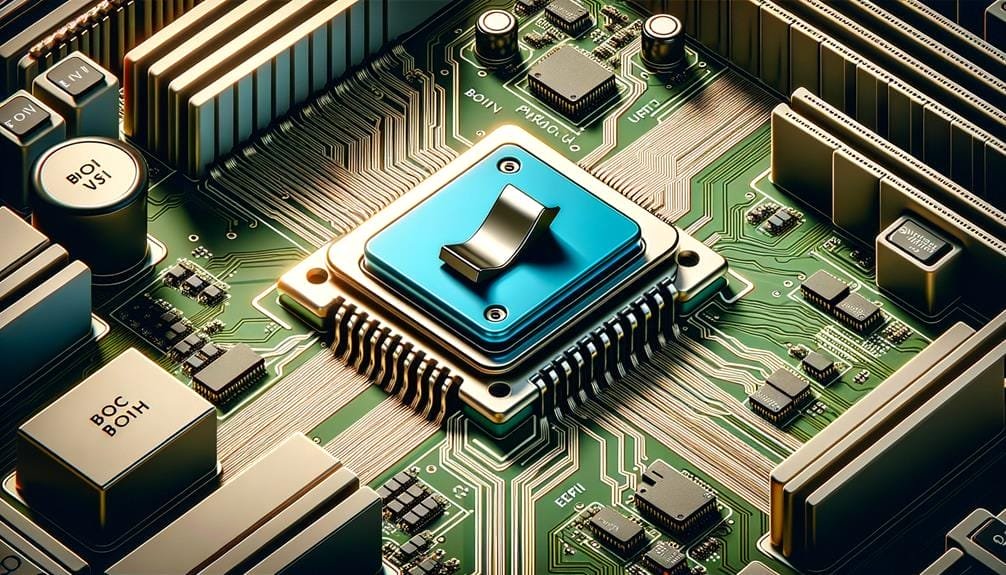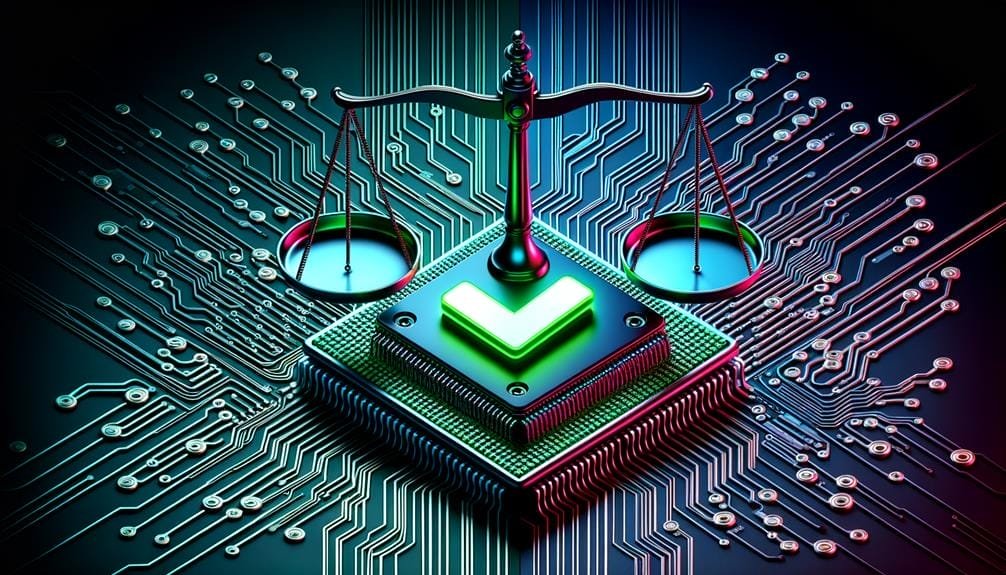Our Newsletter
Sign up for our e-mail newsletter and stay informed for what’s next on the horizon.
Just like the heart is pivotal in human functionality, firmware in our computer systems, particularly BIOS vs UEFI, plays a crucial role too.
These two kinds, each with unique attributes, have ignited quite a bit of discussion in tech circles. UEFI, the more recent entrant, boasts several improvements over the older BIOS, like support for larger drives and improved security.
However, BIOS continues to shine in specific areas. With this in mind, the question arises: Is it the right moment to fully adopt UEFI and bid farewell to BIOS?
Stay tuned as we unravel this technological puzzle.
Just as the human heart is vital to our functionality, firmware in our computer systems, particularly BIOS and UEFI, plays an equally important role.
These two types, each with unique qualities, have sparked significant conversation among tech enthusiasts. UEFI, the latest entrant, offers several advancements over the older BIOS, like support for larger drives and improved security.
Yet, BIOS still excels in certain aspects. With this in consideration, one might wonder: Is it time to completely transition to UEFI and retire BIOS?
Continue reading as we decipher this technological conundrum.
In the realm of computer firmware, we discern two primary types: BIOS, which resides on the computer’s motherboard, and UEFI, a more modern and sophisticated interface that offers amplified features. The traditional system, BIOS, functions in a 16-bit mode, subjecting it to certain constraints. Conversely, UEFI propels performance by operating in 32-bit or 64-bit mode.
In the comparison of UEFI and BIOS, we identify key disparities that underscore the progression of firmware. UEFI accommodates larger drive sizes and swift boot times, presenting an advantage over BIOS. It also retains initialization data in .efi files on an EFI System Partition. This advancement in technology facilitates secure boot and networking features, augmenting the capabilities of the operating system.
The shift from BIOS to UEFI isn’t simply about adopting a different firmware; it’s about welcoming flexibility. This transition offers enhanced partition support, superior system security, and compatibility with contemporary hardware, giving us more dominion over our computing environments. As we dig further into the subtleties of these computer firmware varieties, we’ll gain a stronger grasp of how they impact our computing experience.
In ‘Unpacking BIOS: An Overview’, we’ll initially address the basic principles of BIOS, a firmware found on the motherboard’s EPROM that’s crucial for system initialization. We’ll study its functioning in 16-bit mode, its application of the MBR partitioning scheme, and the way it delivers fundamental support functions for booting and screen display.
To fully comprehend the basics of BIOS, or Basic Input/Output System, it’s vital to note that this firmware, stored on a motherboard’s EPROM, plays a key role in system initialization. As one of the leading firmware interfaces, BIOS conducts hardware initialization during system boot, utilizing the Master Boot Record for this duty.
Reflect on these central points about BIOS:
In a nutshell, BIOS communicates with the motherboard and hardware components to guarantee seamless system startup before the handover to the operating system.
Let’s delve deeper into the functions and limitations of BIOS, the foundational firmware that oversees hardware initialization during your computer’s boot process. BIOS, stored on an EPROM, plays a critical role in system settings and hardware functioning at startup.
By pressing keys such as ‘del’ or ‘F10’ during boot, we can access BIOS, operating in a restrictive 16-bit mode. However, its limitations include only supporting storage devices up to 2 TB. Despite these restrictions, understanding BIOS is crucial, offering us the freedom to configure our systems.
| BIOS Functions | BIOS Limitations |
|---|---|
| Hardware Initialization | 2 TB storage limit |
| System Settings Configuration | 16-bit mode |
| CMOS chip check | EPROM dependence |
BIOS provides a fundamental framework, but its limitations hint at the need for a more advanced firmware.

Delving into the world of UEFI, it becomes clear that this system stores initialization data in .efi files located on the EFI System Partition (ESP). This firmware is compatible with the GPT partitioning scheme, which allows for a greater number of primary partitions compared to BIOS. This adaptability is a progressive step for those of us who require more command over our systems.
Here are some crucial details to bear in mind about UEFI:
Our examination of UEFI portrays it as a powerful firmware replacement for BIOS. Its upgraded features such as GPT partitioning, Secure Boot, and support for .efi files all indicate a future where we’ve more autonomy in managing our systems.
When we analyze BIOS and UEFI, several critical disparities come to light, particularly in their capabilities, compatibility, and performance. UEFI’s hardware support and its necessity for GPT system disks, with an alternative for MBR to GPT conversion, make it more adaptable. This adaptability allows for booting from GPT disks, which improves system performance and storage capacity. On the other hand, BIOS operates in a 16-bit processor mode with limited space, leading to slower boot times.
Specialized disk management tools, like MiniTool Partition Wizard, can streamline the MBR to GPT conversion process for UEFI compatibility. This compatibility is a significant benefit of UEFI over BIOS, providing the flexibility to manage larger disk sizes and quicker boot times.
Here’s a table comparing BIOS and UEFI:
| BIOS | UEFI | |
|---|---|---|
| Boot Time | Slower | Faster |
| Disk Support | MBR | GPT |
| Primary Partitions | Limited | Up to 128 |
| Hardware Support | Limited | Extensive |
| Disk Size | Up to 2TB | Over 2TB |

Our attention is now centered on the procedure of moving between BIOS and UEFI. This encompasses comprehending the unique steps involved, the possible threats linked with this modification, and the advantages one could gain from it.
It’s vital to mention that this shift demands particular hardware backing and system disk compatibleness, which we’ll delve deeper into.
Grasping the subtleties between BIOS and UEFI requires acknowledging that migrating from the traditional BIOS system to the superior UEFI firmware can markedly improve system functionality and compatibility with up-to-date hardware.
Acquiring the knowledge of the distinctions between BIOS and UEFI arms us with the ability to optimize system performance and security, granting us the autonomy to select the most suitable firmware for our needs.
Understanding the differences between BIOS and UEFI, we now move our attention to the procedure of changing modes between these two firmware interfaces. This requires entering the BIOS settings using a specific key during startup, such as F2 or Del. Here, the Boot Mode or Boot Option section allows for the transition between BIOS and UEFI.
Let’s use the following table for clarity:
| Step | BIOS | UEFI |
|---|---|---|
| Access settings | Press specific key on startup | Press specific key on startup |
| Alter mode | Find Boot Mode/Option | Find Boot Mode/Option |
| Employ CSM | Enable/disable to change | Enable/disable to change |
| Save and exit | Preserve alterations | Preserve alterations |
When considering the potential risks and benefits of changing from BIOS to UEFI, it’s crucial to acknowledge that this alteration can notably improve system performance and boot times. While the distinctions between UEFI and BIOS are notable, comprehending them aids in sound decision-making.
UEFI amplifies performance, shortens boot times, and accommodates larger drive support, enhancing the limitations of BIOS.
It also introduces Secure Boot, strengthening defense against malware.
On the flip side, the risks encompass potential data loss during the conversion. Always create a safety copy of critical data.
Changing may also introduce compatibility issues, particularly with dated hardware and software.
In the pursuit of liberty and command over our systems, understanding the advantages and hazards linked with BIOS and UEFI becomes more and more vital.

For the selection of the ideal firmware for your device, factors like compatibility with the system, performance needs, and individual preferences need to be considered. It’s essentially a choice between two alternatives: UEFI and Legacy BIOS.
In terms of quick operations, UEFI proves to be the better firmware. It drastically cuts down boot times, enabling your system to function promptly. Besides speed, UEFI also offers superior security elements, contributing an additional layer of safeguarding for your system. For users who are tech-inclined and like to manage their system, UEFI has a user-friendly graphic user interface that’s simple to use.
Legacy BIOS, conversely, could be the perfect option if you’re using older computers or specific hardware setups. It works in a 16-bit mode that may have some limitations, but it’s dependable and accomplishes the task.
Regarding drive sizes, UEFI again outperforms, supporting larger drive sizes effortlessly. Ultimately, the decision between UEFI and Legacy BIOS hinges on a harmonious balance between system compatibility, performance needs, and your individual preferences.
‘Options abound, don’t they? If you’re operating an older system, BIOS might be your preferred choice. However, for quicker start-up times, broader drive compatibility, and improved safety measures, our nod goes to UEFI.’
We suggest examining your system details or motherboard manual. Alternatively, search for UEFI-specific characteristics when your computer boots up. Utilities such as CPU-Z can also assist in determining whether you’re utilizing UEFI or BIOS firmware.
BIOS (Basic Input/Output System) and UEFI (Unified Extensible Firmware Interface) are both types of firmware that initialize hardware components during the boot process, but UEFI offers more advanced features compared to BIOS. UEFI supports larger hard drives, faster boot times, a graphical interface, and secure boot functionality, whereas BIOS is more limited in terms of support.
UEFI is the modern successor to legacy BIOS and offers several improvements over traditional BIOS. UEFI supports GPT disks and offers a more user-friendly interface, while legacy BIOS relies on MBR disks and lacks many of the advanced features present in UEFI.
UEFI firmware uses a special partition called EFI System Partition to store boot loaders and boot manager information. During the boot process, UEFI locates the bootloader in this partition and initializes the operating system accordingly.
UEFI offers faster boot times, support for larger storage devices, a more user-friendly interface, secure boot capabilities, and improved stability compared to traditional BIOS. Upgrading from BIOS to UEFI can enhance system performance and security.
Secure Boot is a feature supported by UEFI firmware that ensures the operating system boot process is secure and prevents unauthorized software from loading during startup. BIOS does not have native support for Secure Boot, making UEFI a more secure option for modern systems.
Sign up for our e-mail newsletter and stay informed for what’s next on the horizon.